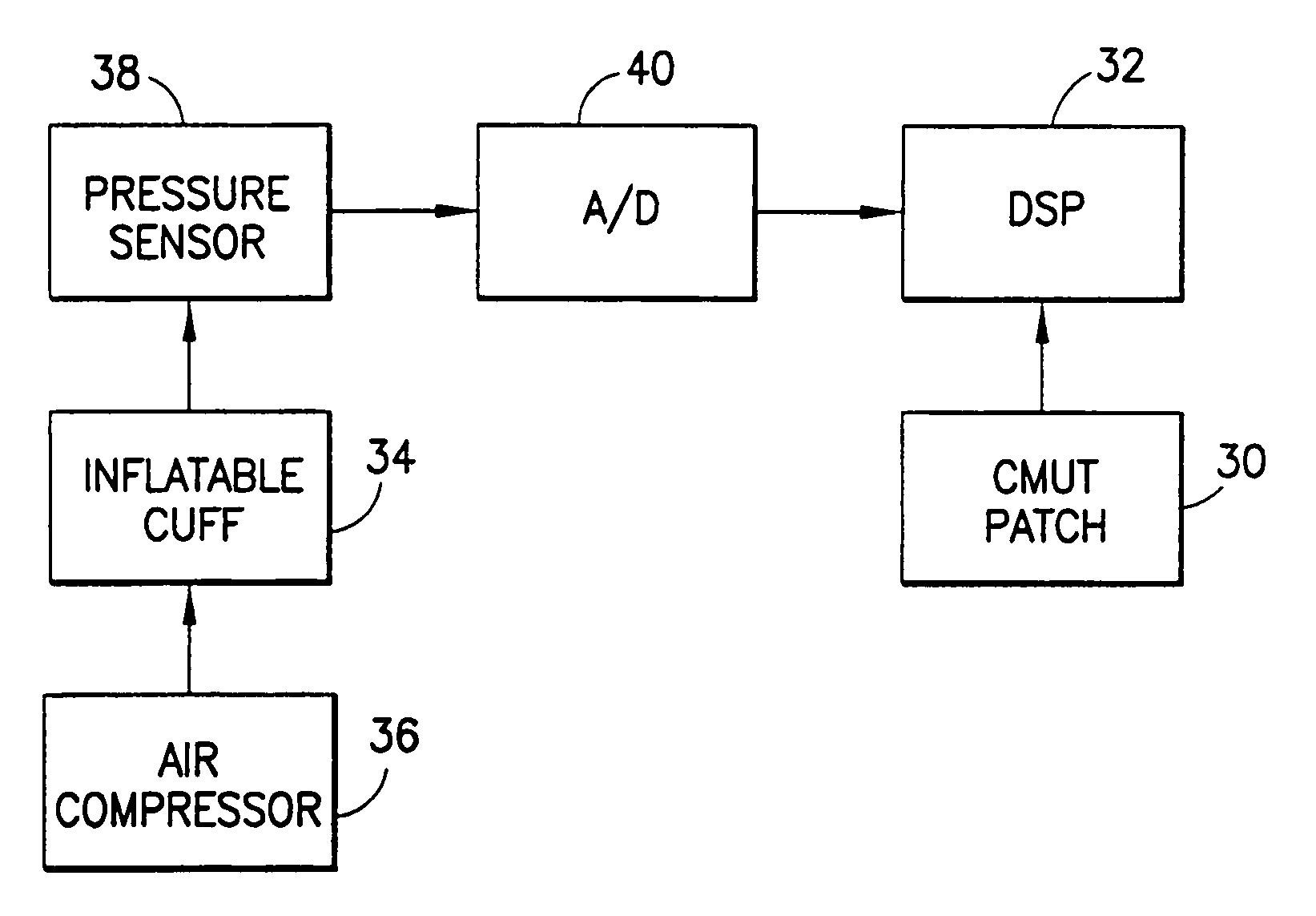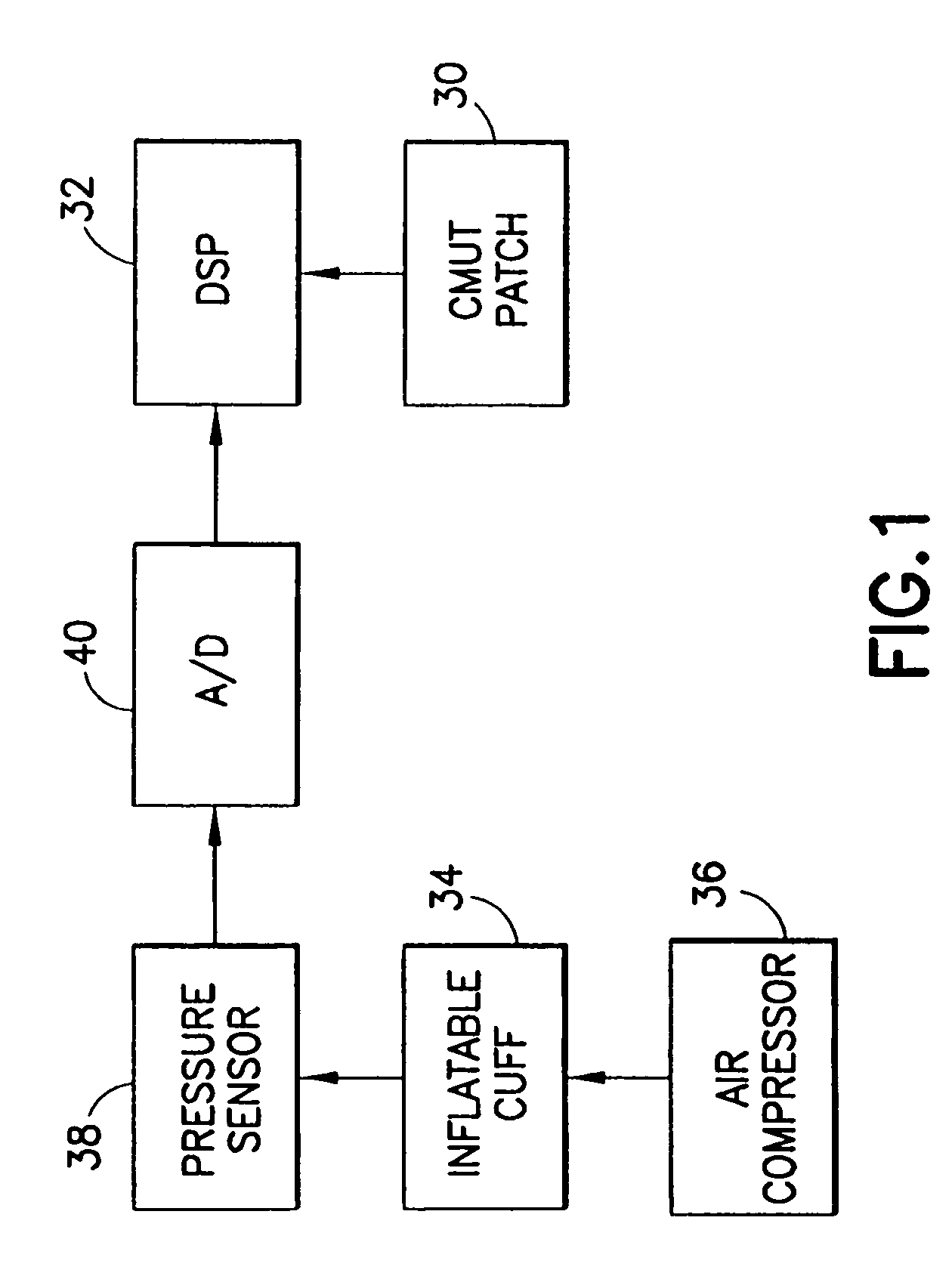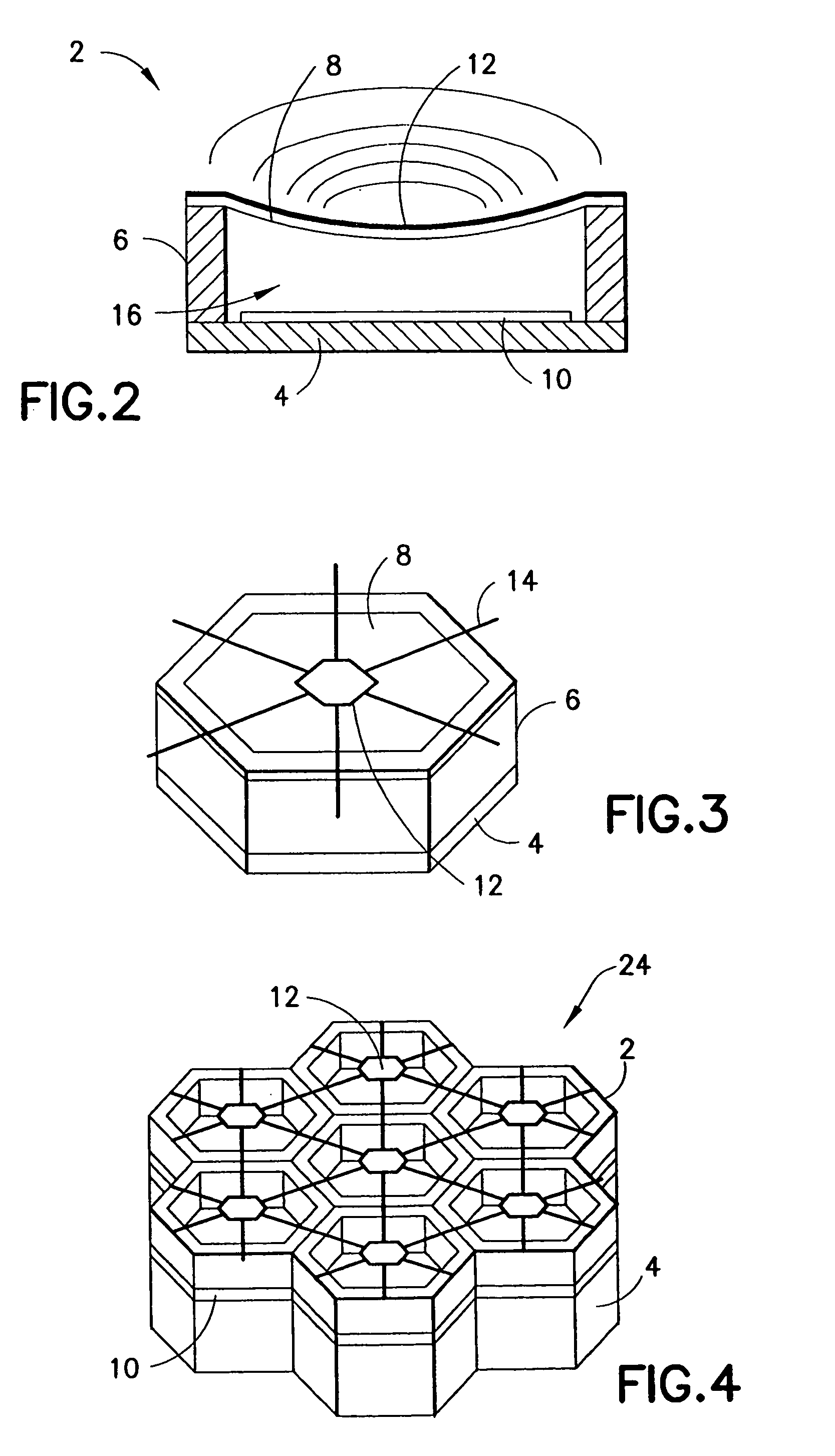Method and apparatus for ultrasonic continuous, non-invasive blood pressure monitoring
a blood pressure monitoring and ultrasonic technology, applied in the field of methods and equipment for continuous, non-invasive monitoring of blood pressure, can solve the problems of inability to accurately measure the pulse transit time and thus blood pressure, pain in each inflation for elderly or hypertensive patients, and patient risk of complications
- Summary
- Abstract
- Description
- Claims
- Application Information
AI Technical Summary
Benefits of technology
Problems solved by technology
Method used
Image
Examples
Embodiment Construction
[0045]In accordance with embodiments of the invention disclosed herein, ultrasound is used to provide input data for the blood pressure estimation scheme. The use of transcutaneous ultrasound can provide volumetric flow, arterial lumen area and pulse wave velocity information. In addition, ultrasound measurements can be taken in such a way that all the data describes a single, uniform arterial segment (e.g., the brachial and common carotid arteries can be used). This means that a computed area relates only to the arterial blood volume present. This also means that the measured PWV is directly related to the mechanical properties of the segment of elastic tube (artery) for which the blood volume is being measured. In the patient monitoring application, the operator of the ultrasound device is eliminated through the use of software that automatically locates the artery in the ultrasound data, e.g., using known edge detection techniques. Autonomous operation of the ultrasound system al...
PUM
 Login to View More
Login to View More Abstract
Description
Claims
Application Information
 Login to View More
Login to View More - R&D
- Intellectual Property
- Life Sciences
- Materials
- Tech Scout
- Unparalleled Data Quality
- Higher Quality Content
- 60% Fewer Hallucinations
Browse by: Latest US Patents, China's latest patents, Technical Efficacy Thesaurus, Application Domain, Technology Topic, Popular Technical Reports.
© 2025 PatSnap. All rights reserved.Legal|Privacy policy|Modern Slavery Act Transparency Statement|Sitemap|About US| Contact US: help@patsnap.com



